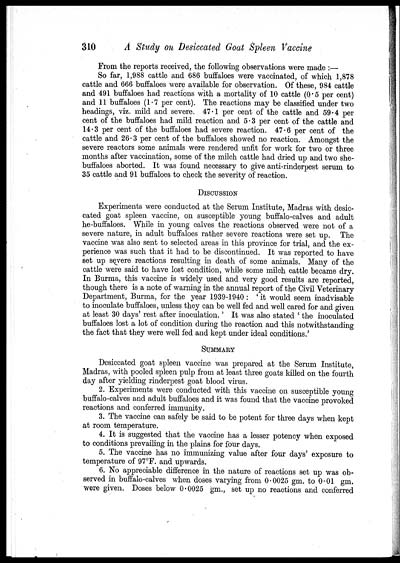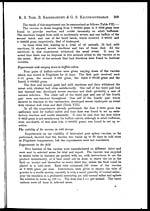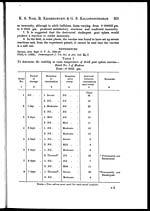Medicine - Veterinary > Veterinary colleges and laboratories > Indian journal of veterinary science and animal husbandry > Volume 12, 1942 > Original articles > Study on desiccated goat spleen vaccine as an immunizing agent against rinderpest
(346) Page 310
Download files
Individual page:
Thumbnail gallery: Grid view | List view

310 A Study on Desiccated Goat Spleen Vaccine
From the reports received, the following observations were made :—
So far, 1,988 cattle and 686 buffaloes were vaccinated, of which 1,878
cattle and 666 buffaloes were available for observation. Of these, 984 cattle
and 491 buffaloes had reactions with a mortality of 10 cattle (0.5 per cent)
and 11 buffaloes (1.7 per cent). The reactions may be classified under two
headings, viz. mild and severe. 47.1 per cent of the cattle and 59.4 per
cent of the buffaloes had mild reaction and 5.3 per cent of the cattle and
14.3 per cent of the buffaloes had severe reaction. 47.6 per cent of the
cattle and 26.3 per cent of the buffaloes showed no reaction. Amongst the
severe reactors some animals were rendered unfit for work for two or three
months after vaccination, some of the milch cattle had dried up and two she-
buffaloes aborted. It was found necessary to give anti-rinderpest serum to
35 cattle and 91 buffaloes to check the severity of reaction.
DISCUSSION
Experiments were conducted at the Serum Institute, Madras with desic-
cated goat spleen vaccine, on susceptible young buffalo-calves and adult
he-buffaloes. While in young calves the reactions observed were not of a
severe nature, in adult buffaloes rather severe reactions were set up. The
vaccine was also sent to selected areas in this province for trial, and the ex-
perience was such that it had to be discontinued. It was reported to have
set up severe reactions resulting in death of some animals. Many of the
cattle were said to have lost condition, while some milch cattle became dry.
In Burma, this vaccine is widely used and very good results are reported,
though there is a note of warning in the annual report of the Civil Veterinary
Department, Burma, for the year 1939-1940 : ' it would seem inadvisable
to inoculate buffaloes, unless they can be well fed and well cared for and given
at least 30 days' rest after inoculation.' It was also stated ' the inoculated
buffaloes lost a lot of condition during the reaction and this notwithstanding
the fact that they were well fed and kept under ideal conditions.'
SUMMARY
Desiccated goat spleen vaccine was prepared at the Serum Institute,
Madras, with pooled spleen pulp from at least three goats killed on the fourth
day after yielding rinderpest goat blood virus.
2. Experiments were conducted with this vaccine on susceptible young
buffalo-calves and adult buffaloes and it was found that the vaccine provoked
reactions and conferred immunity.
3. The vaccine can safely be said to be potent for three days when kept
at room temperature.
4. It is suggested that the vaccine has a lesser potency when exposed
to conditions prevailing in the plains for four days.
5. The vaccine has no immunizing value after four days' exposure to
temperature of 97°F. and upwards.
6. No appreciable difference in the nature of reactions set up was ob-
served in buffalo-calves when doses varying from 0.0025 gm. to 0.01 gm.
were given. Doses below 0.0025 gm., set up no reactions and conferred
Set display mode to: Large image | Zoom image | Transcription
Images and transcriptions on this page, including medium image downloads, may be used under the Creative Commons Attribution 4.0 International Licence unless otherwise stated. ![]()
| Permanent URL | https://digital.nls.uk/75324137 |
|---|
| Description | Covers articles from 1942. |
|---|




